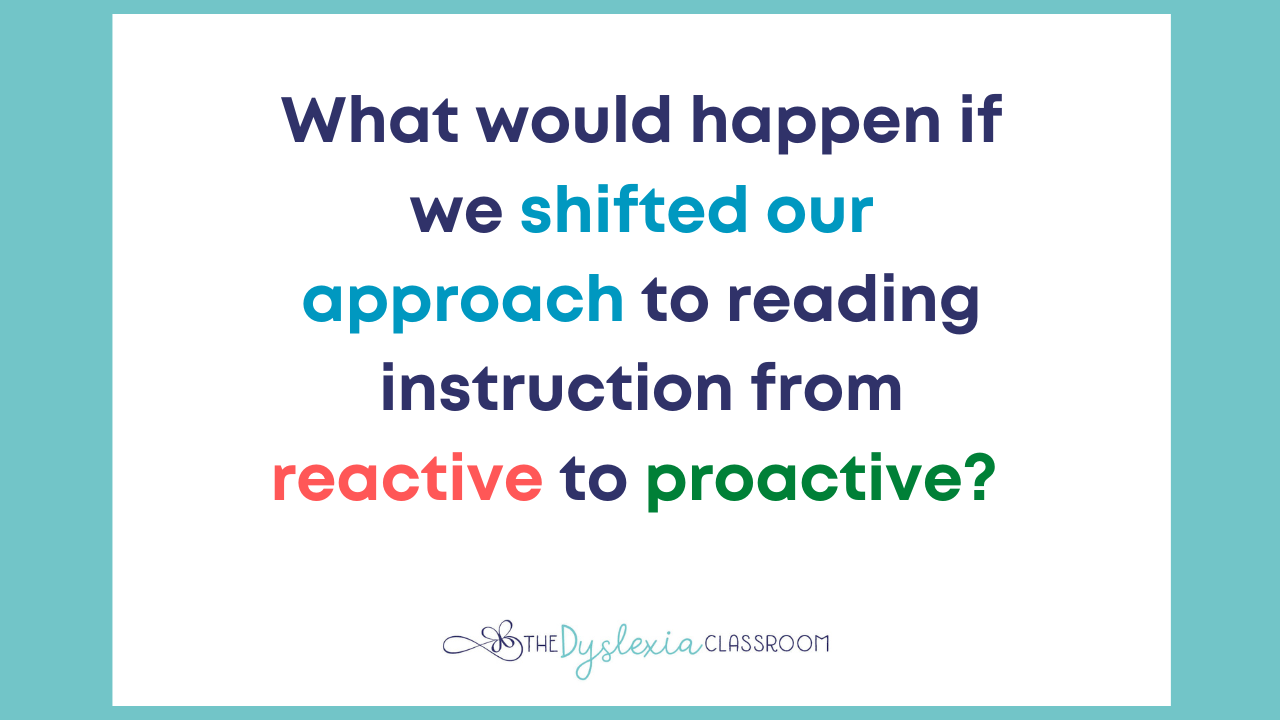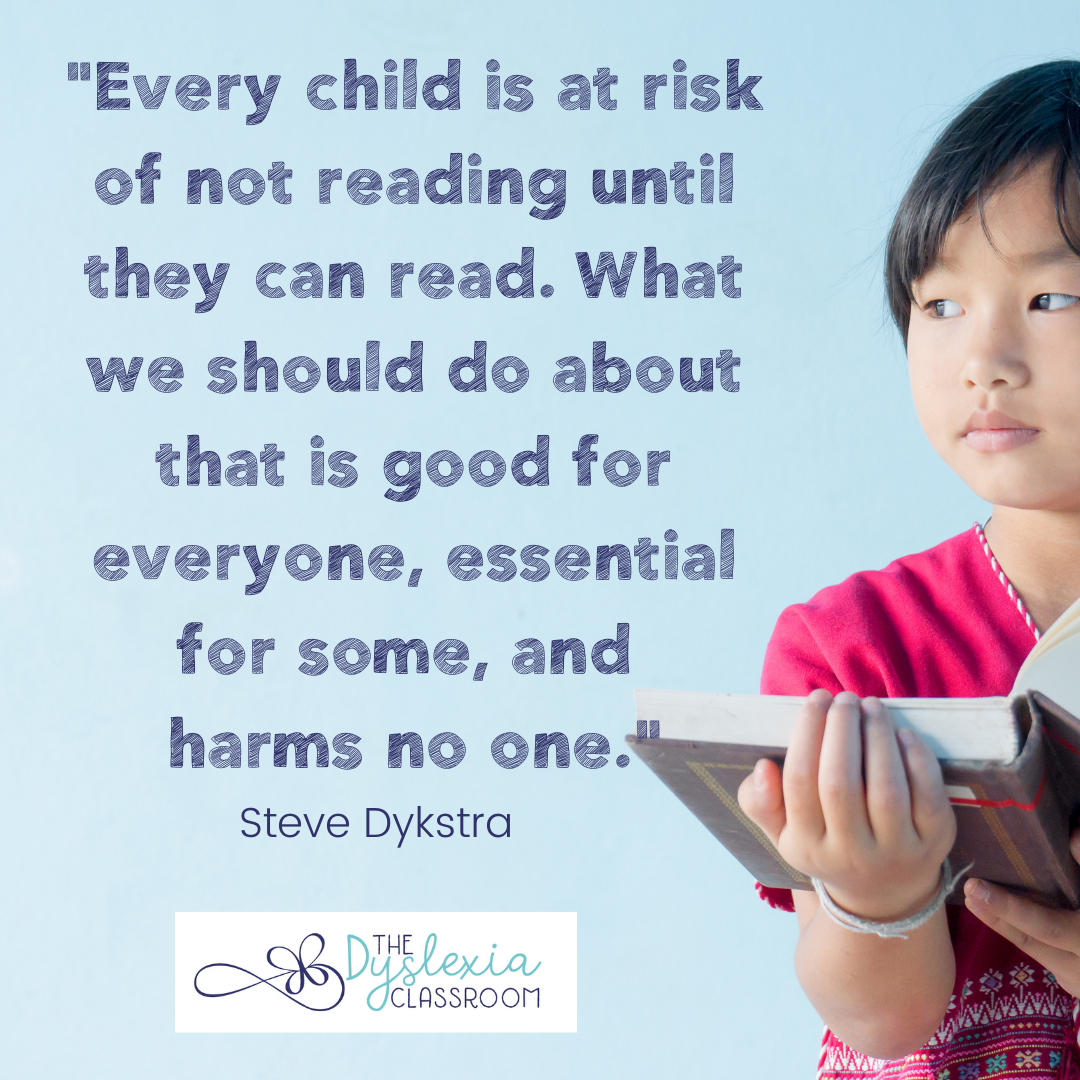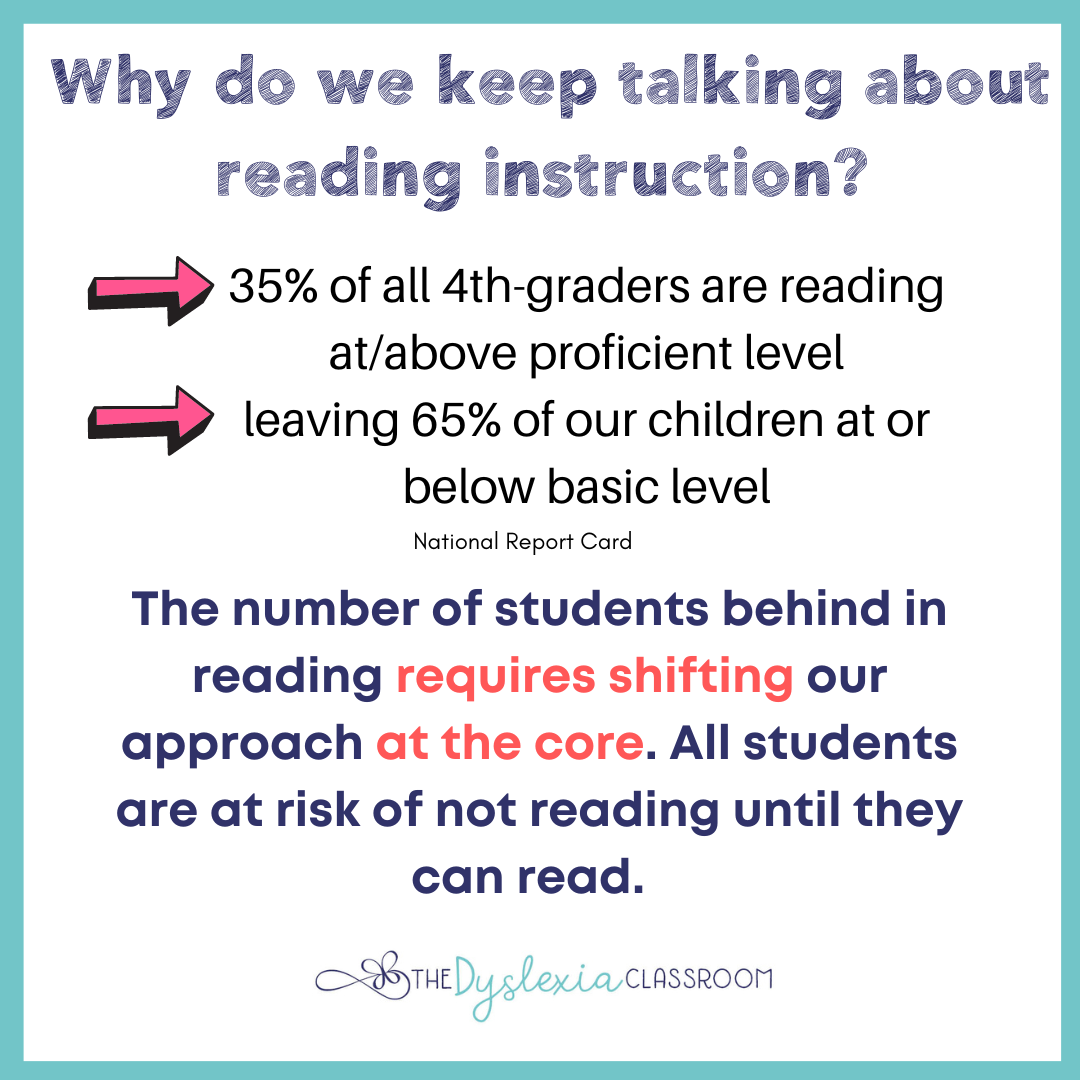Shifting our approach to reading instruction from reactive to proactive

What would happen if we shifted our approach to reading instruction from reactive to proactive?
We need to stop and think about why our students struggle with reading at a national level. According to the last National Report Card, 35% of all 4th-graders and 34% of all 8th graders performed at or above proficiency. That leaves 65-66% of our students reading at the basic level or below.

The number of students behind in reading requires shifting our approach at the core. All students are at risk of not having until they can read.
I have always felt that this reactive approach is like a sinking ship where we are working so hard to scoop the water from the boat that we don't analyze why the ship is sinking in the first place. We will never be able to keep the ship afloat this way, and our national reading scores prove this.
So what can we do as educators in the system? Providing core instruction within the general classroom that follows the principles of structured literacy and interventions that align with research (the science of reading brought to life) can help provide the best foundation for ALL learners.
🌱"Structured Literacy is the science of reading brought to life."🌱
-Dr.Timothy Odegard
The elements of Structured Literacy set up ALL learners for success. The science of reading is a collection of research about reading and the brain. This research is not new, but the term "science of reading" has become more mainstream as more people become aware of the decades of research and more in-depth reviews of curriculums; we must be cautious that the science of reading isn't just a buzzword.
What is Structured Literacy?
This umbrella term coined by the International Dyslexia Association was created to describe effective reading instruction vital for students with dyslexia and beneficial for all.
Structured Literacy's Evidence-Based Elements Work Together!
⭐️phonology- a study of the sound structure of spoken language. Phonemic awareness is central to phonology.
⭐️Sound-Symbol Correspondences- mapping speech to print
⭐️Syllables - understanding and applying the six syllable types and syllable division rules to assist in decoding and encoding
⭐️Morphology - understanding and working with the smallest units of meaning in our language
⭐️Syntax- the set of principles that dictate the sequence and function of words in a sentence
⭐️Semantics - the meaning of language (comprehension)
Structured Literacy's Evidence-Based Teaching Principles
🦋Systematic and Cumulative
🦋Explicit instruction
🦋Diagnostic
To ensure that all children have access to effective reading instruction, we must ensure that their teachers have BOTh the deep content knowledge and specific teaching expertise to teach these elements according to these principles
-International Dyslexia Association

Understanding the science of reading deepens our knowledge base about the how, why, and what we need to teach. I like to refer to it as a journey about how we can best learn and help ALL students find success.
Having been on this journey for some time, I know firsthand how teacher and parent education and support can impact our children. It is not a quick fix or a silver bullet to teaching reading. It takes a great deal of investment in proper teacher training and support.
Welcome to the journey.🦋

This information is the intellectual property of @2016 The Dyslexia Classroom. Do not use or repurpose without expressed permission from The Dyslexia Classroom. Please give The Dyslexia Classroom an attribution if you use, reference, or quote/paraphrase copyrighted materials. This includes but is not limited to blogs, social media, and resources.



